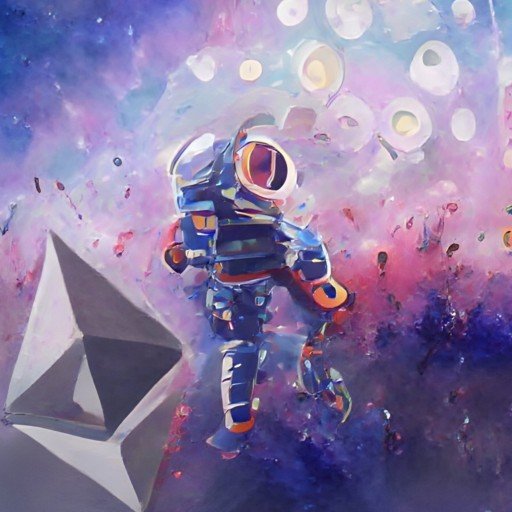An anonymous group of developers debuted the Bitcoin network in 2009. They used cryptography, proof of work, and decentralized computer networks. The principles that guided them were:
- How do we ensure a strong control of ownership of value (using cryptographic keys)?
- How do we remove intermediaries?
- How do we incentivize random people across the planet to behave in a way that most benefits the collective?
What they created was a way to mint and manage the value of a currency in an equal and distributed manner with no central authority using computer networks. Bitcoin took off, giving birth to what is now commonly referred to as blockchain technology.
Soon after, people all over the world began building other uses for blockchain technology. The results of these efforts since 2009 have come in waves. Bitcoin itself was the first wave. The ‘second wave’ peaked in 2017, with over two thousand new blockchain projects. These projects explored using blockchain technology for medical records, ecommerce, supply chain management, and fighting counterfeit products, to name a few. We are now in the middle of the ‘third wave’, which seeks to solve a wide range of problems and build on what was learned in the first two waves.
Ethereum kicked off and pioneered the second wave. Cardano and other contemporaries kicked off and are pioneering the third wave. This article aims to help you understand how Ethereum and Cardano deploy blockchain technology and the problems each is attempting to solve.
Second wave
Ethereum launched in 2015 as a way to create a ‘world computer’ powered by blockchain technology. Anyone, anywhere in the world, with access to the internet and electricity, can purchase special computer hardware and join the Ethereum network. Their computer becomes a “node” in the network when they join. The Ethereum software uses all of these nodes, belonging to many different individuals, to form a single virtual machine called the Ethereum Virtual Machine (EVM). This unified yet decentralized machine has what is called a “global shared state.” This simply means that each node on the network holds a copy of all data sent to or created by the EVM.
Software developers write programs and store the entire program on this global EVM, much like the familiar programs that have been written for our home and work computers for decades. Once the program is deployed, it cannot be changed or removed from the blockchain. Ethereum programs are created using a programming language made specifically for Ethereum called Solidity.
Anyone can request the EVM to run any program that is deployed on the network. You broadcast your request by sending Ethereum’s native currency, Ether (Eth), to the unique location of the program on the blockchain. As of April 2022, an estimated 2 million Solidity programs were deployed to the Ethereum Virtual Machine. These programs encompass a wide range of features and capabilities. These include but are not limited to:
- Financial investment products,
- NFTs (art and unique entities on the blockchain)
- Tokens (specific community currencies)
- Game achievements and asset keeping.
To make requests on the Ethereum network - that is, in order to use it - you must create an Ethereum account. This is true whether you are a developer, a user, an Ethereum program, or someone running an Ethereum node. This is something new and different about Ethereum - Bitcoin does not require creating an account. Ethereum accounts are used to record the sum of all interactions involving that account. As of 2022, the total number of Ethereum accounts is around 199 Million.
Ethereum’s account and global state models make it much easier to understand what’s happening on the network in real-time. This has some significant advantages, but also some drawbacks. These will be covered more in the next article, but for now, let’s jump to the third wave.
Third Wave
Two years after Ethereum launched, Cardano arrived on the scene with a different take on blockchain and how it should work. While second-generation blockchain networks like Ethereum focus primarily on bringing computer programs ONTO the blockchain, Cardano actually took a step back, in order to solve some problems and build a stronger foundation.
Cardano is taking the “specialized toolkit” route. To do this, Cardano returned to Bitcoin’s first principles. Cardano used scholastic peer-reviewed processes to think long and hard about what it means to have a global blockchain system that can help solve four classes of challenges:
- Like Bitcoin, a store of value
- Like Ethereum, secure apps and programs
- Managing identities that can’t be taken away once issued (a new concept!)
- Managing governance processes
Cardano picked up where Bitcoin stopped in its attempt to provide a toolkit for these challenges. Here is a peek at the Cardano toolkit:
Proof-of-stake
Instead of using proof-of-work like Bitcoin and Ethereum, Cardano uses proof-of-stake to both incentivize people across the planet to participate and facilitate its security protocol. Proof-of-work uses computer processors to help secure the network. Proof-of-stake replaces the processor with currency. Cardano’s currency is called Ada.
Local accounting state
Like Bitcoin, Cardano has no concept of a global virtual machine that knows everyone’s account and balances. When you make requests on the Cardano network, you include in your requests everything the network needs to verify and process the transactions in a local context. This allows the network to scale and serve more people since each transaction does not have to wait for a global reconciliation to be processed. This also means you can know exactly how much your transaction will cost before you push go!
Sovereign Identity
Cardano is being built to allow any community to use the network to create and manage identity systems. When identities are issued to you on a public blockchain network like Cardano, you truly own them. They cannot be ‘revoked’ or taken away, even by the entity that issued them.
Governance
Cardano is being built to provide tools to enable any community to manage governance processes, such as recording and counting votes or requiring users to be associated with specific pieces of data on the blockchain before being allowed to interact with programs on the blockchain.
Sustainability
In software development, “sustainability” refers to the mechanism by which the project will be funded and maintained long-term. Most second and third-wave blockchains set a big chunk of money aside to help fund future development and improvement. Bitcoin does not have a network treasury at all. At launch, it relied solely on free labor. Today core contributors to the Bitcoin network are either funded by companies with a vested interest in the success of Bitcoin or by individuals and university labs via the patron model. On the other hand, Cardano is set up so that a portion of fees collected will always be put into a treasury to fund future development and maintenance. This innovation ensures that there will always be a budget to enhance and maintain the system, as long as people are using it.
Radical incentivisation
On Bitcoin and Ethereum, only the people who run the computer servers that power the network are directly rewarded by the network. On Cardano, more than just computer operators are directly rewarded. “Node” operators still get the lion’s share of rewards from the network - without them, the network would not run! However, every single ADA holder, if they participate in staking, is also rewarded. What’s more, the aforementioned treasury is used to fund anyone in the community who wants to use their skill to make Cardano better! This includes but is not limited to:
- writing software programs
- writing content (the Cardano treasury funded this article),
- translating content
- running Twitter spaces
- teaching
Dumpling Twitter Space
Solution: Host and join epochly Twitter spaces to give updates and analyses on Chinese community update and general community update.
Perun Channels for Cardano
Solution: We implement Perun Channels for Cardano and thereby enable P2P transactions at unlimited scalability and with cross-chain potential.
METAVERS OF PLAY-TO-ENTERTAIN GAMER
Solution: The only way to attract 2.5 billion gamers is to make higher quality and fun games to really enjoy and entertain, not only for only earning.
Migrating from ETH: Newcomer Setup
Solution: Getting started, "how to"s, insights, and technical articles about Cardano technologies that specifically targets an Ethereum audience.
Back to first principles
Cardano’s takeaway from Bitcoin’s first principles is that an expensive and hard-to-scale global computer is not needed to deliver solutions to those first principles. Nor does the Cardano network have a virtual machine like Ethereum. Instead, it has two separate but interconnected layers for processing basic rules. It has a ledger layer for doing things like performing local checks when you try to spend Ada or any currency on Cardano. When you run software on Cardano, those actions take place on a separate layer. The actual program is not run on the blockchain. Instead, it is run locally by the person interested in the result.
Like on Ethereum, you can use Cardano for NFTs, Tokens, game achievements, and asset keeping. As of March 2022, the total number of programs on Cardano was around 1,000. The total number of users was around 3.5 million. It’s worth noting that Ethereum has had programmability since its launch in 2015. Cardano, on the other hand, is still being built and only got programmability in September of 2021. In other words, growth and adoption on Cardano are moving fast! Anyone anywhere in the world with access to the internet and electricity can purchase commodity hardware running a free Linux operating system and join the Cardano network. You will need to put up 500 Ada as a refundable deposit to join the network. You get that 500 Ada back when you retire your server.
Conclusion
Both Ethereum and Cardano have redefined and moved the needle on what a blockchain network is and what it can be used for. Both projects set out asking different questions and, as a result, have gone down different paths for answers. Understanding this can help explain the differences and help you understand the “why” behind the pros and cons of each system. This article is the kickoff of a new series that will continue to delve into these two ecosystems. Whether you are a developer, a business owner, an NFT enthusiast, or just a curious soul, we are writing for you. We think it’s worth learning what these new technologies bring to the table and how you might choose to use them.



No comments yet…